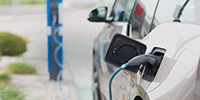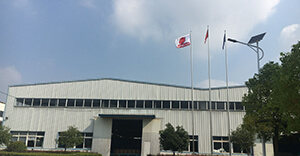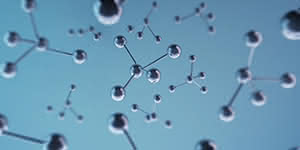Why Deep Cycle Batteries are so popular!
|
AGM, or Absorbed Glass Mat Batteries AGM batteries have several advantages over both gelled and flooded, at about the same cost as gelled: ★ Much safer then wet batteries (due the hydrogen gas recombination during charging) Starting, Marine & Deep Cycle Batteries Starting (sometimes called SLI, for starting, lighting, ignition) batteries are commonly used to start and run engines. Engine starters need a very large starting current for a very short time. Starting batteries have a large number of thin plates for maximum surface area. The plates are composed of a Lead “sponge”, similar in appearance to a very fine foam sponge. This gives a very large surface area, but if deep cycled, this sponge will quickly be consumed and fall to the bottom of the cells. Automotive batteries will generally fail after 30-150 deep cycles if deep cycled, while they may last for thousands of cycles in normal starting use (2-5% discharge). Deep cycle batteries are designed to be discharged down as much as 80% time after time, and have much thicker plates. The major difference between a true deep cycle battery and others is that the plates are SOLID Lead plates – not sponge. This gives less surface area, thus less “instant” power like starting batteries need. Although these can be cycled down to 20% charge, the best lifespan vs cost method is to keep the average cycle at about 50% discharge. Unfortunately, it is often impossible to tell what you are really buying in some of the discount stores or places that specialize in automotive batteries. The golf car battery is quite popular for small systems and RV’s. The problem is that “golf car” refers to a size of battery (commonly called GC-2, or T-105), not the type or construction – so the quality and construction of a golf car battery can vary considerably – ranging from the cheap off brand with thin plates up the true deep cycle brands, such as Crown, Powersonic, Trojan, etc. In general, you get what you pay for. Marine batteries are usually a “hybrid”, and fall between the starting and deep-cycle batteries, though a few (Rolls-Surrette and Concorde, for example) are true deep cycle. In the hybrid, the plates may be composed of Lead sponge, but it is coarser and heavier than that used in starting batteries. It is often hard to tell what you are getting in a “marine” battery, but most are a hybrid. Starting batteries are usually rated at “CCA”, or cold cranking amps, or “MCA”, Marine cranking amps – the same as “CA”. Any battery with the capacity shown in CA or MCA may or may not be a true deep-cycle battery. It is sometimes hard to tell, as the term deep cycle is often overused. CA and MCA ratings are at 32 degrees F, while CCA is at zero degree F. Unfortunately, the only positive way to tell with some batteries is to buy one and cut it open – not much of an option. Plate Thickness Plate thickness (of the Positive plate) matters because of a factor called “positive grid corrosion”. This ranks among the top 3 reasons for battery failure. The positive (+) plate is what gets eaten away gradually over time, so eventually there is nothing left – it all falls to the bottom as sediment. Thicker plates are directly related to longer life, so other things being equal, the battery with the thickest plates will last the longest. The negative plate in batteries expands somewhat during discharge, which is why nearly all batteries have separators, such as glass mat (AGM) that can be compressed. Automotive batteries typically have plates about .040″ (4/100″) thick, while forklift batteries may have plates more than 1/4″ (.265″ for example in larger Rolls-Surrette) thick – almost 7 times as thick as auto batteries. The typical golf cart will have plates that are around .07 to .11″ thick. While plate thickness is not the only factor in how many deep cycles a battery can take before it dies, it is the most important one. Internal Resistance Part – or most – of the loss in charging and discharging batteries is due to internal resistance. This is converted to heat, which is why batteries get warm when being charged up. The lower the internal resistance, the better. AGM batteries have resistance levels upto 5 times lower than standard batteries. Slower charging and discharging rates are more efficient. A battery rated at 180 amp-hours over 6 hours might be rated at 220 AH at the 20-hour rate, and 250 AH at the 48-hour rate. Much of this loss of efficiency is due to higher internal resistance at higher amperage rates – internal resistance is not a constant – kind of like “the more you push, the more it pushes back”. Typical efficiency in a lead-acid battery is 85-95%, in alkaline and NiCad battery it is about 65%. True deep cycle AGM’s can approach 98%. Lifespan of Deep Cycle Batteries The lifespan of a deep cycle battery will vary considerably with how it is used, how it is maintained and charged, temperature, and other factors. In extreme cases, it can vary to extremes – AGM’s can be killed in less than a year by severe overcharging. Gelled cells batteries can be destroyed in one day when overcharged with a large automotive charger. Golf cart batteries can be destroyed without ever being used in less than a year because they were left sitting in a hot garage without being charged. Even the so-called “dry charged” (where you add acid when you need them) have a shelf life of 18 months at most. They are not totally dry – they are actually filled with acid, the plates formed and charged, then the acid is dumped out. These are some typical (minimum – maximum) typical expectations for batteries if used in deep cycle service. There are so many variables, such as depth of discharge, maintenance, temperature, how often and how deep cycled, etc. that it is almost impossible to give a fixed number. But here goes anyway: ★ Starting: 3-12 months |













